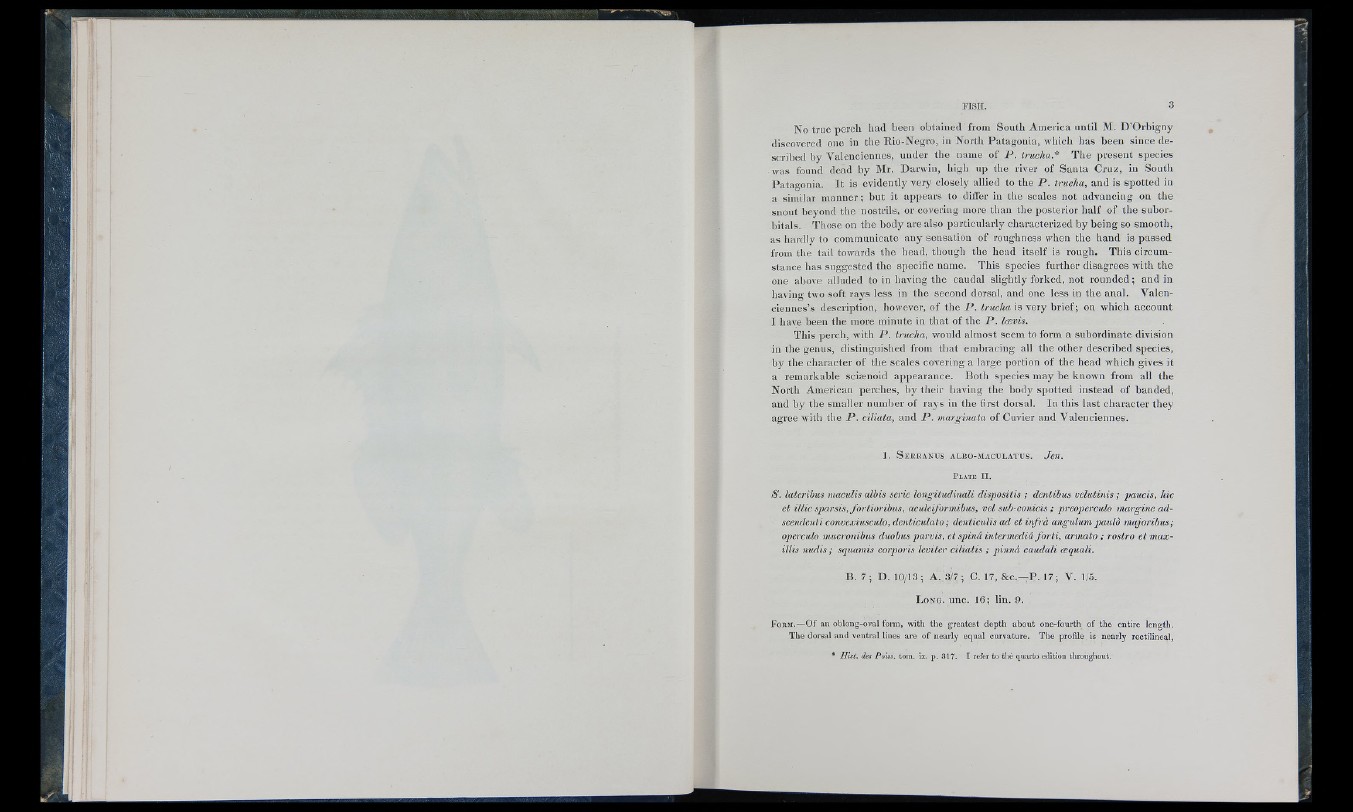
No true percli had been obtained from South America until M. D ’Orbigny
discovered one in the Rio-Negro, in North Patagonia, which has been since described
by Valenciennes, under the name of P . irucha* The present species
was found dead by Mr. Darwin, high up the river of Santa Cruz, in South
Patagonia. It is evidently very closely allied to the P . trucha, and is spotted in
a similar m anner; but it appears to differ in the scales not advancing on the
snout beyond the nostrils, or covering more than the posterior half of the suborbitals.
Those on tlie body are also particularly characterized by being so smooth,
as hardly to communicate any sensation of roughness when the hand is passed
from the tail towards the head, though the head itself is rough. This circumstance
has suggested the specific name. This species further disagrees with the
one above alluded to in having the caudal slightly forked, not rounded; and in
having two soft rays less in the second dorsal, and one less in the anal. Valenciennes’s
description, however, of the P . tnicha is very brief; on which account
I have been the more minute in that of the P . IcBvis.
This perch, with P . trucha, w'ould almost seem to form a subordinate division
in the genus, distinguished from that embracing all the other described species,
by the character of the scales covering a large portion of the head which gives it
a remarkable sciienoid appearance. Both species may be known from all the
North American perches, by tlieir having the body spotted instead of banded,
and by the smaller number of rays in the first dorsal. In this last character they
agree with the P . ciliata, and P . marginata of Cuvier and Valenciennes.
1. S e k r a n u s a l b o - m a c u l a t u s . Jen.
P l a t e II.
S. lateribus maculis albis serie iongitudinali dispositis ; dentibus velutinis ; paucis, hie
et illic sparsis, fortioribus, acideiformibus, vel sub-conicis ; preoperculo margine ad-
scendenti convexiusculo, denticulato ; denticulis ad et infrà angulum pauló majoribus;
operculo mucronibus duobus parvis, et spinA intermedia forti, armato ; rostro et max-
illis nudis ; squamis corporis leviter ciliatis ; pinnAi caudali i
B. 7; D. 10/13; A. 3/7; C. 17, & c .— P. 17; V. 1/5.
L o n g . u n c . IO; lin . 9.
F orm.—O f an oblong-oval form, with the greatest depth about one-fourth of the entire length.
The dorsal and ventral lines are of nearly equal curvature. The profile is nearly rectilineal,
• H ist, des Puiss. tom . ix. p. 317. I refer to tlie quarto edition throughout.